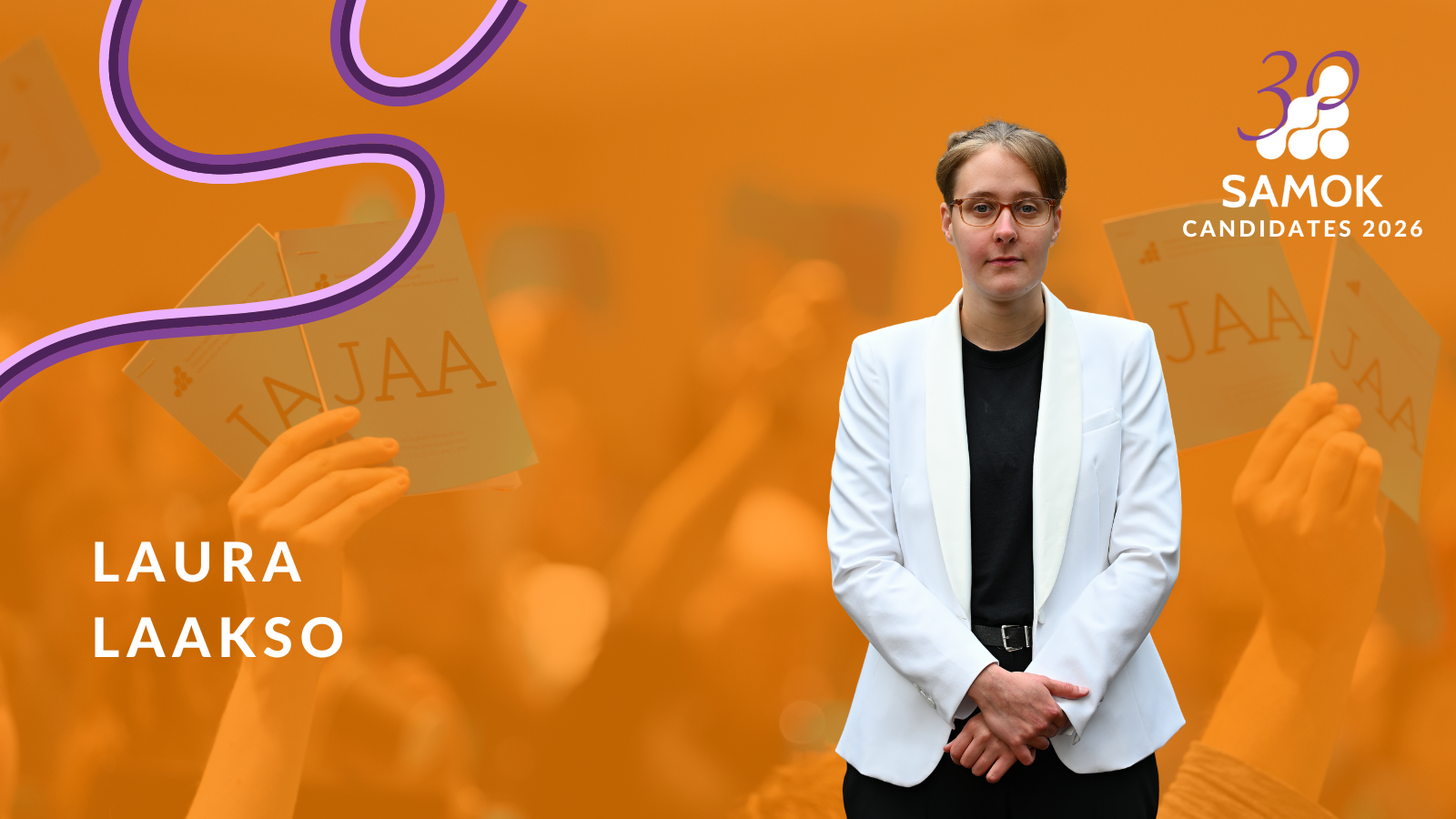All of us have surely stopped to think about our future at some point. Sometimes it’s clear what direction we want to take. Other times, the future feels foggy and uncertain. And increasingly, it seems to depend on decisions over which individual students have no say.
In recent years, money has been cut from higher education, making it harder for students to make ends meet, cope, and focus on what they came to university for: learning. Student allowance barely covers basic living expenses. Many students work full-time just to afford housing, food, medicine, and other necessities.
The role of our university of applied sciences students in Finland’s future is significant. They are the ones who care, build, develop, and renew our society. But how can a student grow into a skilled, committed professional if they burn out during their studies? What kind of employees will our students become if they are already exhausted and unable to fully engage in their
education?
More and more students are struggling at the edge of burnout. A large portion of their time is spent working outside of their studies, slowing down graduation, weakening learning outcomes, and increasing the risk of dropping out entirely. The current government’s policies contradict our future goals. Don’t we want Finland’s future to be bright, filled with skilled professionals? Students who are well-supported graduate faster, enter the workforce stronger, and repay their investment to society many times over. Every euro invested in education is an investment that pays itself back.
We need more than patching and reactive fixes. We need foresight. The world is changing rapidly. Working life evolves, the need for skills changes, and technology and digitalization reshape nearly every field. The education system must respond and be at the forefront of this development. That’s why the government has a responsibility to anticipate how the field of universities of applied sciences will change over the next five, ten, or twenty years. What kind of professionals will be needed? How do we ensure that education meets the needs of future labor markets? And above all, how do we ensure that students are equipped to meet this challenge?
Foresight means investing today so we don’t have to extinguish crises tomorrow. It means funding support models that aren’t based solely on current budget pressures but on long-term needs. It means securing students’ livelihoods so they can focus on learning, as they’re meant to. It means better dialogue between universities of applied sciences, working life, and the government. It means investing in our students’ present and thereby their future.
If we want Finland to remain a leader in education and expertise, we must treat students accordingly. They are the future, but they need a present they can rely on.
It is the government’s responsibility to build an education policy that not only patches problems but sees them coming and most importantly, prevents them. A student’s future begins today. It begins with the decisions being made right now.
Author: Laura Laakso, candidate for SAMOK vice president for 2026
During the autumn, candidates for the SAMOK Board of Directors for 2026 will be presented on the SAMOK blog and on social media. For more information about the General Assembly, click here.

